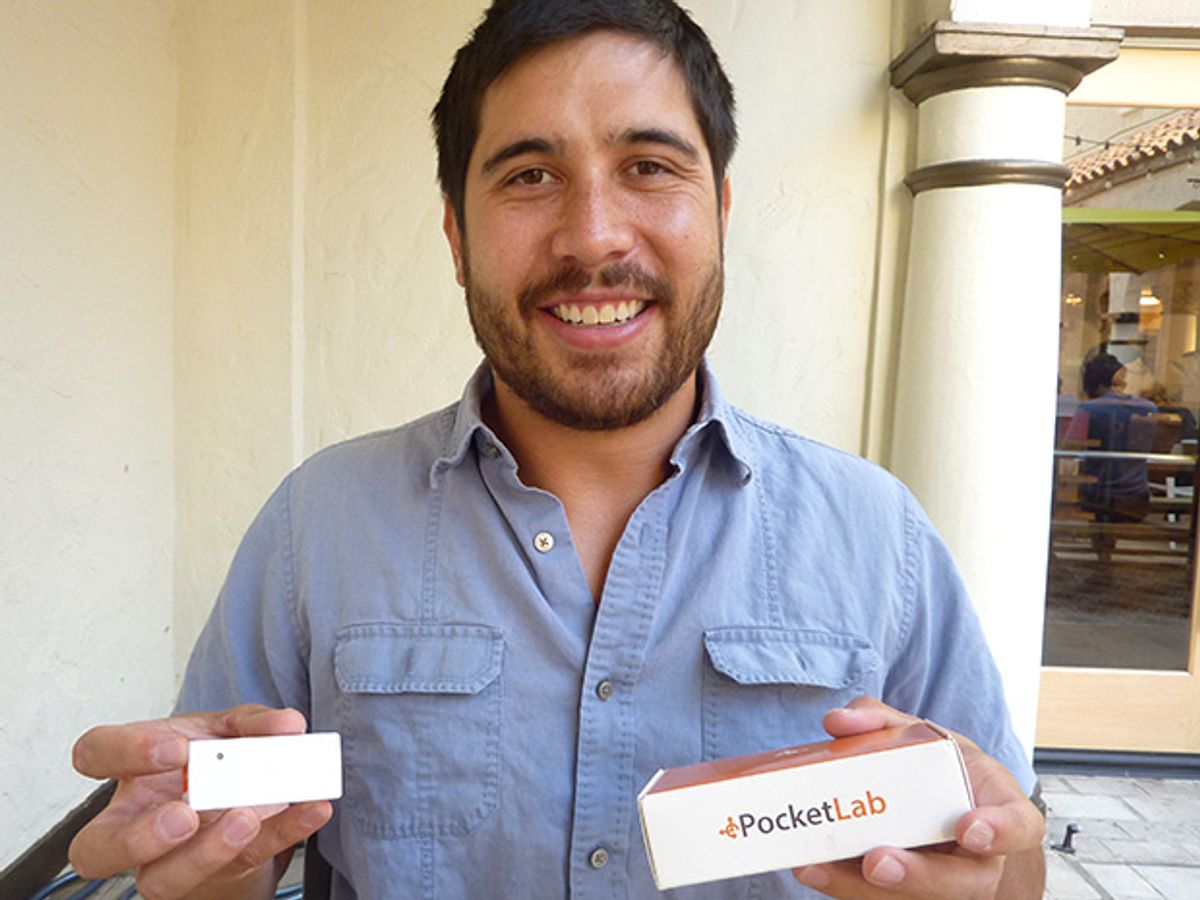Two years ago, Clifton Roozeboom, a Stanford Ph.D. student in mechanical engineering, was calibrating some new sensors—and getting frustrated. He didn’t mind the struggle to get data off of his own experimental devices—that was to be expected. But why, he wondered, was it so hard to pull data from commercial sensors? He had to buy specialized sensors that were able to record measurements, then build hardware to communicate between the sensors and computer, and develop custom programs to store the data. In a world in which smart phones talk to fitness trackers and door locks and kitchen scales, why couldn’t they talk to sensors used in experiments?
So he built a package of sensors that did just that—communicated wirelessly with a smart phone—and went on with his research. A few years ago, that might have been where the story ended. But in this era of startup fever, particularly in Silicon Valley, especially at Stanford, it would be odd for a student designing anything not to at ponder, at least for a moment, if he could start a company to sell his gadget.
Now Roozeboom is CEO of PocketLab, currently based in Redwood City, Calif. The company has a product: a $98 box about the size of a Matchbox car that contains an accelerometer, a gyroscope, a magnetometer, a pressure sensor, a temperature sensor, and a wireless transmitter.

The gadget pairs with iOS, Android, or Chromebook apps to collect data and send it to cloud-based analytical software. Besides Roozeboom, two other full-time employees and five contractors are working on improving the software and the website and marketing the device. PocketLab has an undisclosed amount of angel investment plus $100,000 and four months of office space and mentoring from Intel, as part of the Intel Education Accelerator. In a March campaign on Kickstarter, the company picked up $115,000 by selling 1100 of its $98 first-generation product.
PocketLab is now selling the devices from its own website, but they’ll soon be in educational supply catalogs. The main target market: physics teachers.
Why physics teachers? “If you are doing a classic experiment in AP physics, you might have, say, a track and a pulley and you want to attach a sensor to a cart to measure acceleration, force, and momentum transfer,” says Roozeboom. “The typical gear available is wired, plugs into a specialized handheld gadget with a host of menus to navigate. The students spend a lot of time understanding how to use the gear instead of learning concepts.” In other traditional physics experiments, Roozeboom says, the device can be attached to a rocket to study projectile motion, stuck to a pendulum to look at harmonic motion, or placed inside a tube to measure changes in pressure with volume.
Besides being used by teachers, homeschoolers and “nerdy parents” to teach physics, says Roozeboom, customers so far have attached the device to drones to track their behavior, stuck it on the helmets of race car drivers testing automobiles, measured magnetic fields coming off an inductive cooktop, attached it to the bottom of a punching bag to measure the force of hits, and put it into a soccer ball and onto a player’s foot to track acceleration.
Relying on a smartphone for data gathering, besides making the gadget inexpensive and easy to use, lets PocketLab do something most traditional lab equipment can’t: easily pair video with data collection. That’s proving to be particularly useful for science education (see video, above).
This is just a start, Roozeboom says. Right now, PocketLab’s team is focused on improving the app’s user interface and expanding the analysis capabilities. They aim to, for example, enable users to easily graph their data, perform Fourier transforms, and filter results. Working on a next generation of hardware will have to wait, though, Roozeboom says. “As a hardware engineer, I would love to start cranking away on the development of PocketLab 2, but that’s not the highest priority right now. This first version solved a lot of problems for science educators; now we need to get the product in front of more people, get more feedback, and grow the company.”
Tekla S. Perry is a former IEEE Spectrum editor. Based in Palo Alto, Calif., she's been covering the people, companies, and technology that make Silicon Valley a special place for more than 40 years. An IEEE member, she holds a bachelor's degree in journalism from Michigan State University.



